Adventure Cycling With A Twig Stove
People have been cooking on fire for hundreds of thousands of years. About a third of the world’s population still cooks on fire. Wood is humanity’s OG cooking fuel.
When I was eighteen I hitchhiked across Mexico, which is where I first saw people cooking on fire as a daily practice. People in small towns often had brick or earthen stoves where they’d toast hand-pressed tortillas or boil big pots of beans. The smoke added a special flavor. These fires were always tended by women whose skills were truly remarkable.
On my first long bike trips, I never bothered to carry a camp stove. I either ate cold food or cooked on campfires. This worked great, and I learned to appreciate hot food as an occasional luxury. I still associate campfires with food, warmth, and luxurious comfort.
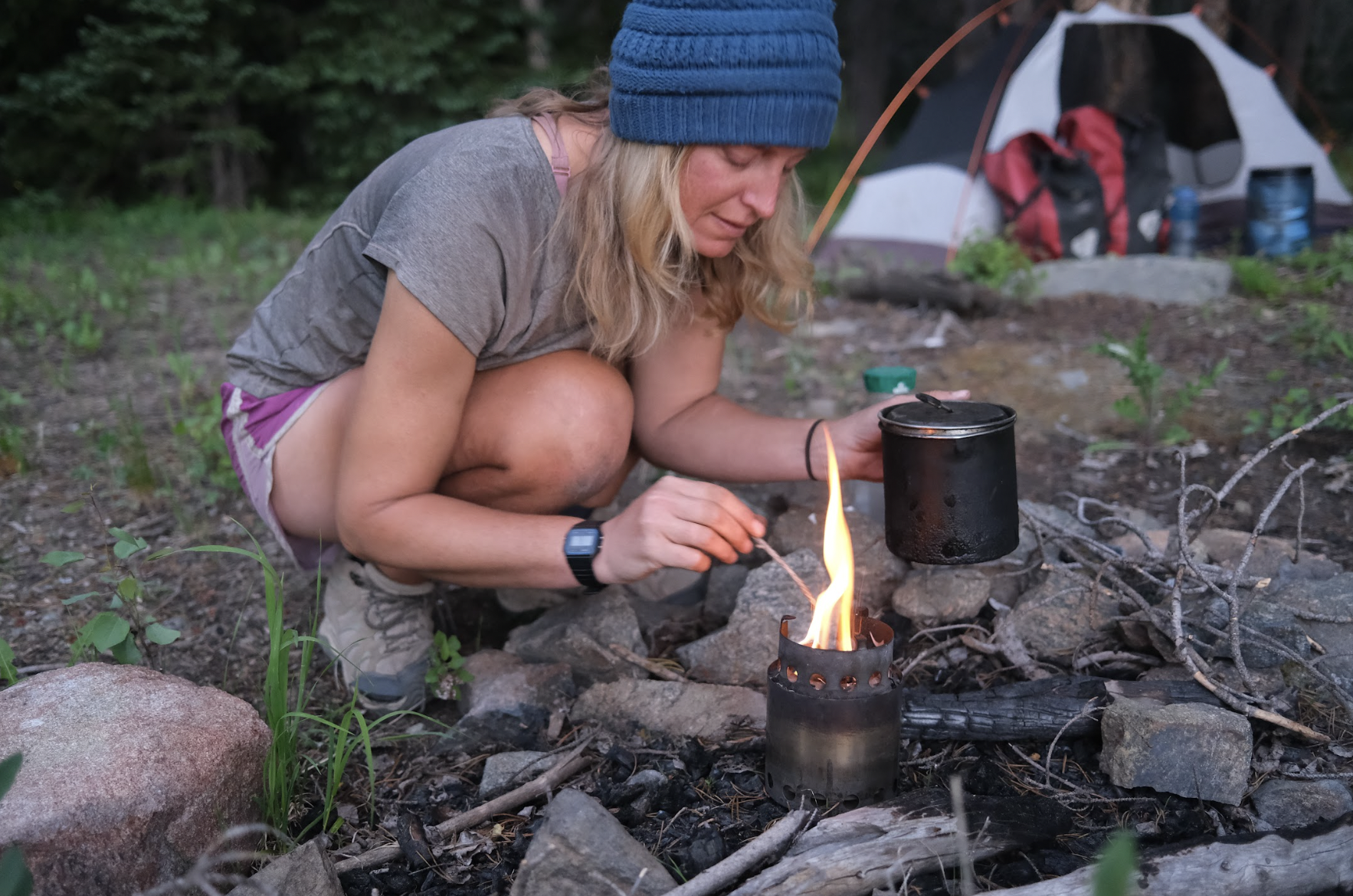
In my thirties, however, I became addicted to coffee, and this changed everything! For the first time in my life I needed hot water! I tried a full range of backcountry stoves and coffee makers, including tiny filters, instant coffee, and a Jetboil press. It all worked fine, but I hated lugging around the extra weight of a stove and fuel. I didn’t mind carrying paperback books, puppets, and rocks I found along the way, but for some reason I hated packing propane. It was a dilemma.
Finally in 2021 I found my perfect solution: a twig stove and thermos! I’ve now used this special combo to cook food and make coffee for over 5,000 miles of cycling adventures and 1,100 miles of backpacking.
Twig Stoves
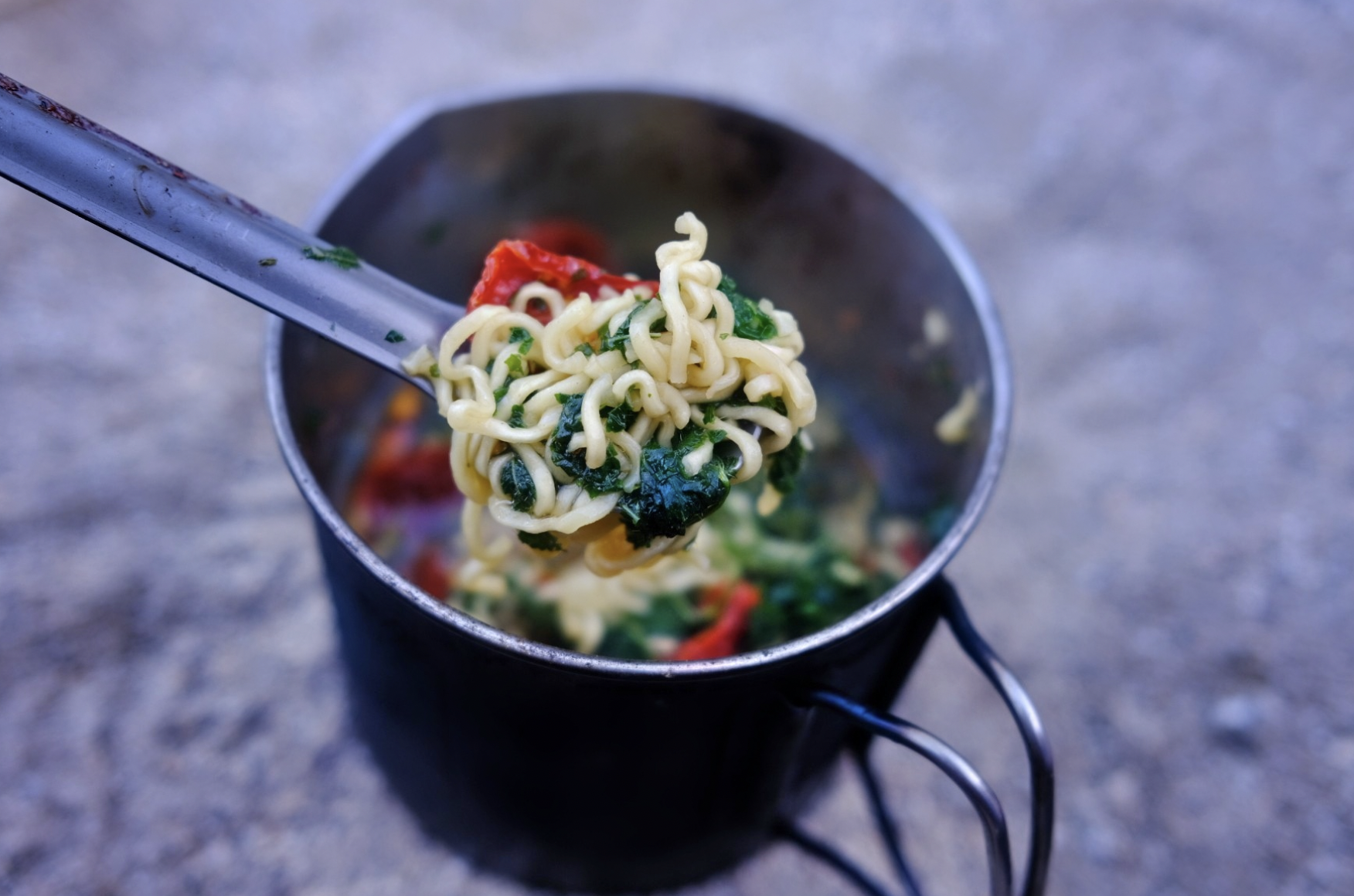
Twig stoves are tiny cooking stoves that use natural materials (twigs, pine cones, wood shavings, bark, palm fronds) as a fuel source. They come in many shapes and styles. Some fold up after use, others retain a rigid form. Most are made of steel or titanium. Some twig stoves have a fan to increase airflow; the Biolite Campstove 2 comes with a charging station. There are a lot of options to choose from!
Solo Stove Lite
My twig stove is a Solo Stove Lite. I chose this stove because it’s economical, relatively small, and has double walls which protect the ground from being scorched when you use it. This stove has been my sole source of cooking for over a year of cumulative use in swamps, forests, deserts, and mountains across three countries.
The Solo Stove Lite weighs nine ounces and is made from stainless steel. It has a small pot holder that nests inside during transport. Though the design looks simple, the technology behind this stove is fascinating. Once you light the fire, air enters the stove through holes at the bottom, rises into the double walls, and gets pulled out through top vents. This creates a super-efficient secondary combustion called gasification, which leaves the fire nearly smoke-free. It’s much easier and faster to cook on a wood-gasifier stove than on a regular campfire.
Lighting a Twig Stove
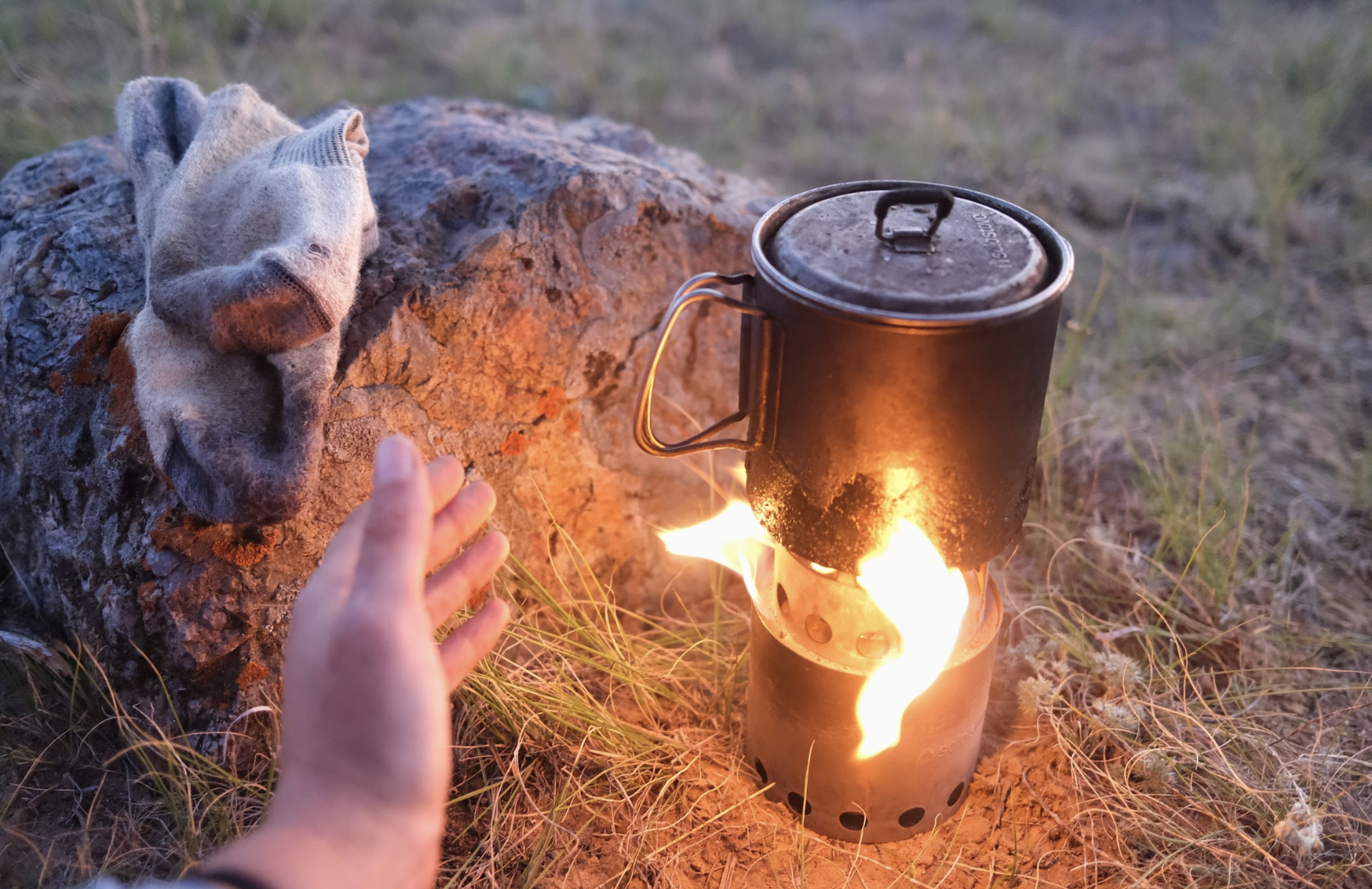
There are a few different ways to light a twig stove. The Solo Stove company recommends building a twig bundle and lighting it from the top. Personally, I prefer kindling a tiny flame in the bottom of the stove and adding twigs as it grows. I’m a fan of doing whatever works best for you. Most people need to practice lighting their twig stove a few times before they feel really comfortable with it. It’s a skill that you hone over time.
One of the biggest advantages of using a twig stove is: the twigs! You can find them just about anywhere. In wet weather I gather dry twigs from the base of trees, underneath overhanging rocks, or anywhere that’s protected from the rain. It takes longer to light and maintain a twig stove in wet weather, but it can be done. Some of my favorite twig stove experiences have been in the rain. A warm fire and hot tea on a wet day always feels like magic.
Thermos Coffee
I usually only light my stove once a day, in the evening. First I boil water for thermos coffee, then I cook dinner. To make the coffee, I just add coffee grounds to my thermos and pour boiling water overtop. Then I stick the thermos in my sleeping bag.
When I wake up in the morning, I pull out the thermos and pour hot brewed coffee into the thermos lid, which doubles as a tiny mug. My Montbell Alpine thermos has a threaded stopper which naturally filters the coffee grounds as I pour the coffee. It’s a real treat to drink hot coffee each morning without even getting out of my sleeping bag!
Backcountry Cooking
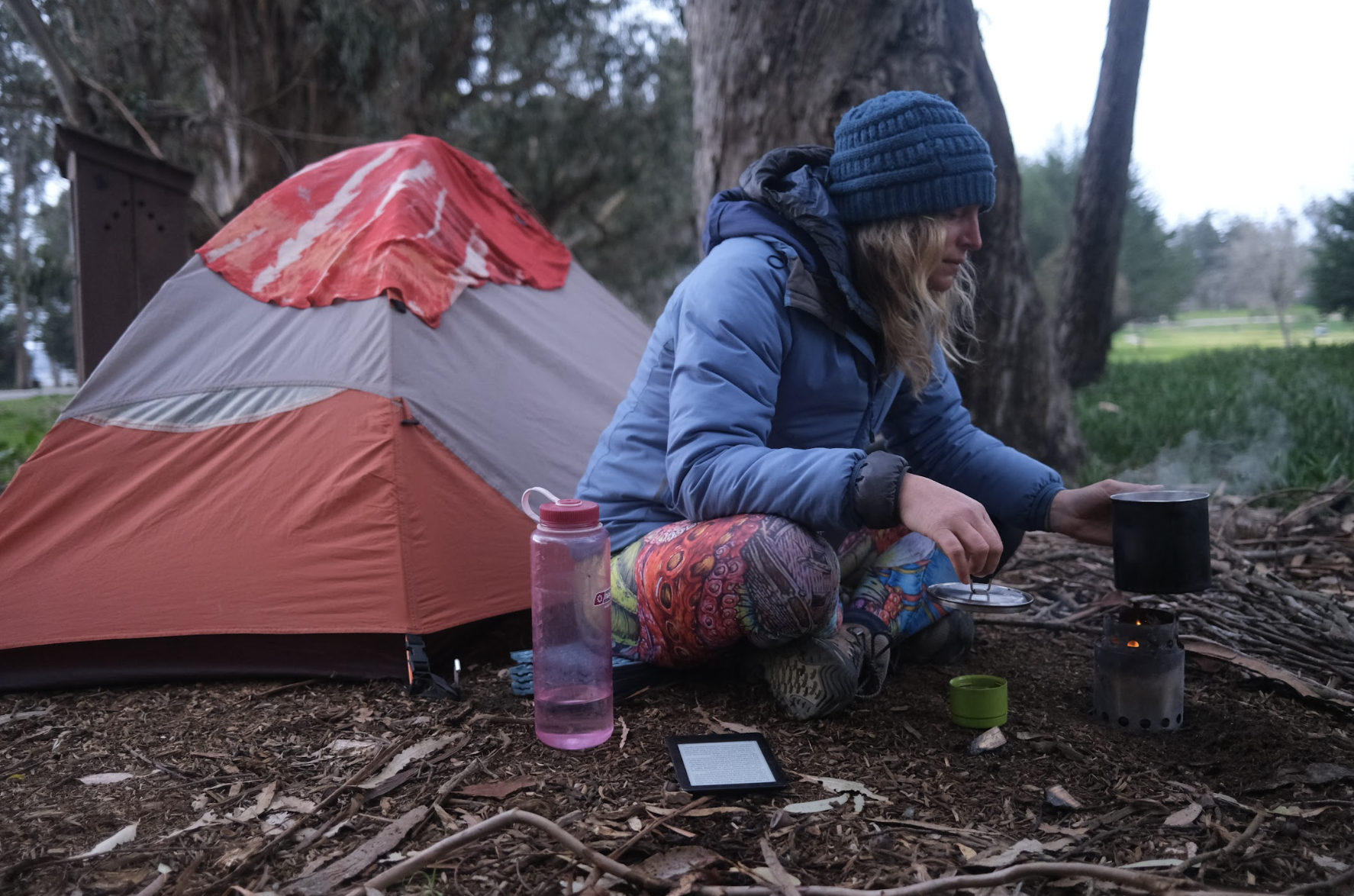
For dinner I often cook regular backcountry foods like instant rice or pasta. I also use my stove to boil eggs, simmer beans, roast sausages, and toast marshmallows. I have fond memories of a day I spent on the Florida trail slow-cooking a venison stew. When I’m done cooking, I leave the stove outside to cool overnight and pack it up in the morning.
Twig stoves create soot, so you need to store the stove and your cooking pot in reusable bags. I’ve never bothered to wash the outside of my cooking pot. Instead, I just let the soot build up until it’s thick enough to chip off. But mostly I just don’t care. I think the gnarly, soot-covered surface gives my cooking pot extra character!
Frontcountry Use
When I’m at home, my Solo Stove Lite is my best party trick. I bring it everywhere! I’ve hosted twig stove tea parties, s’mores gatherings, and late-night hot chocolate dates. It adds a flair of ambiance anywhere you go–even your own backyard.
Fire Safety
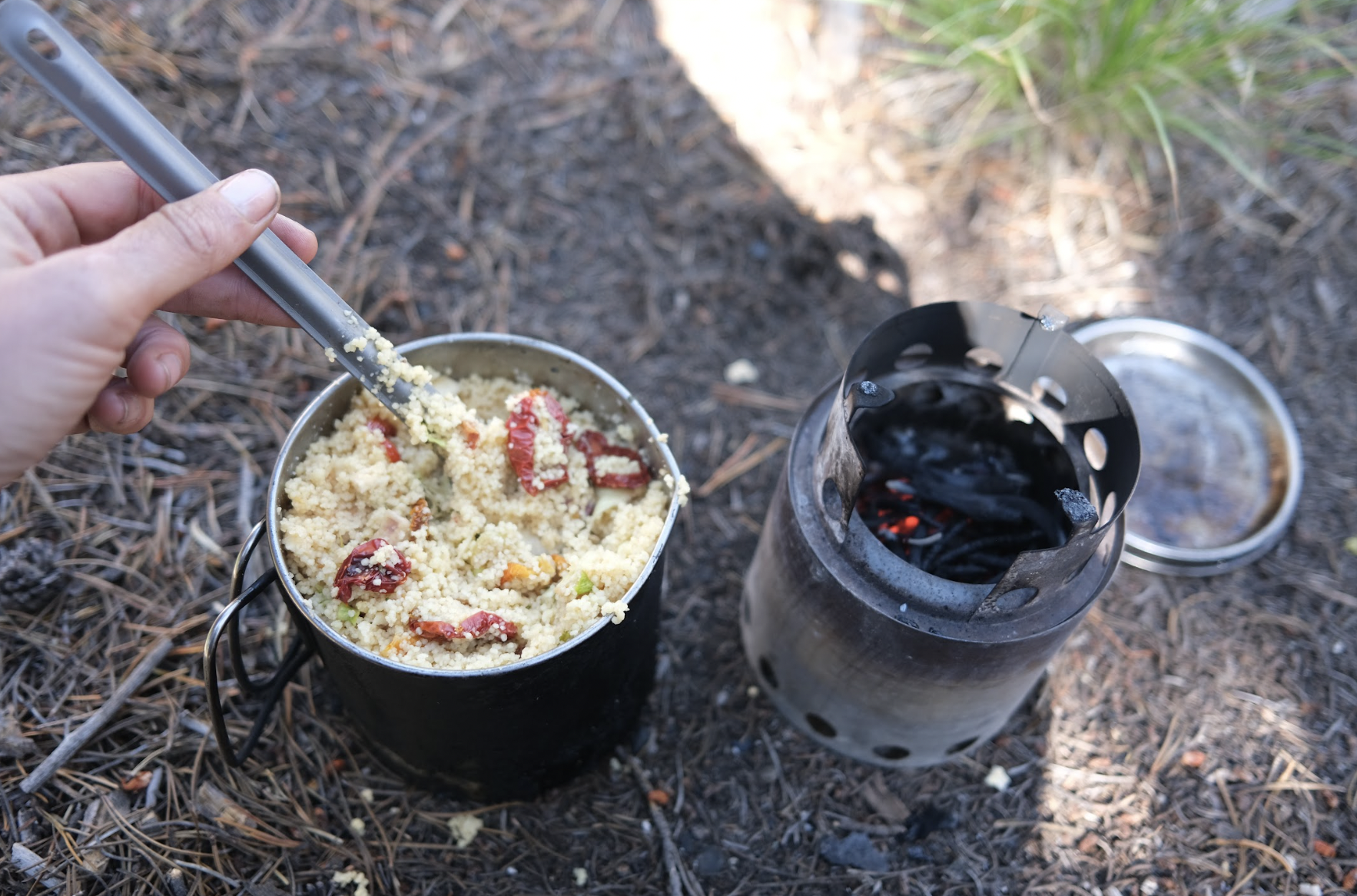
Twig stoves are not allowed in all backcountry areas. Check your local regulations before you go. On my recent cycling trip across the US, I sometimes passed through areas where I couldn’t use my Solo Stove. During those times I ate cold food and cold-soaked my coffee grounds. (This is the same method as thermos coffee, but with cold water.)
If I’m in a campsite with a fire circle, I light the stove inside the circle. I’ve also used my stove on picnic tables, on top of grills, in city parks, on peoples’ lawns, or balanced between rocks on riverbanks. I never leave the stove unattended. When I’m cooking, the fire has my full attention.
A Unique Relationship
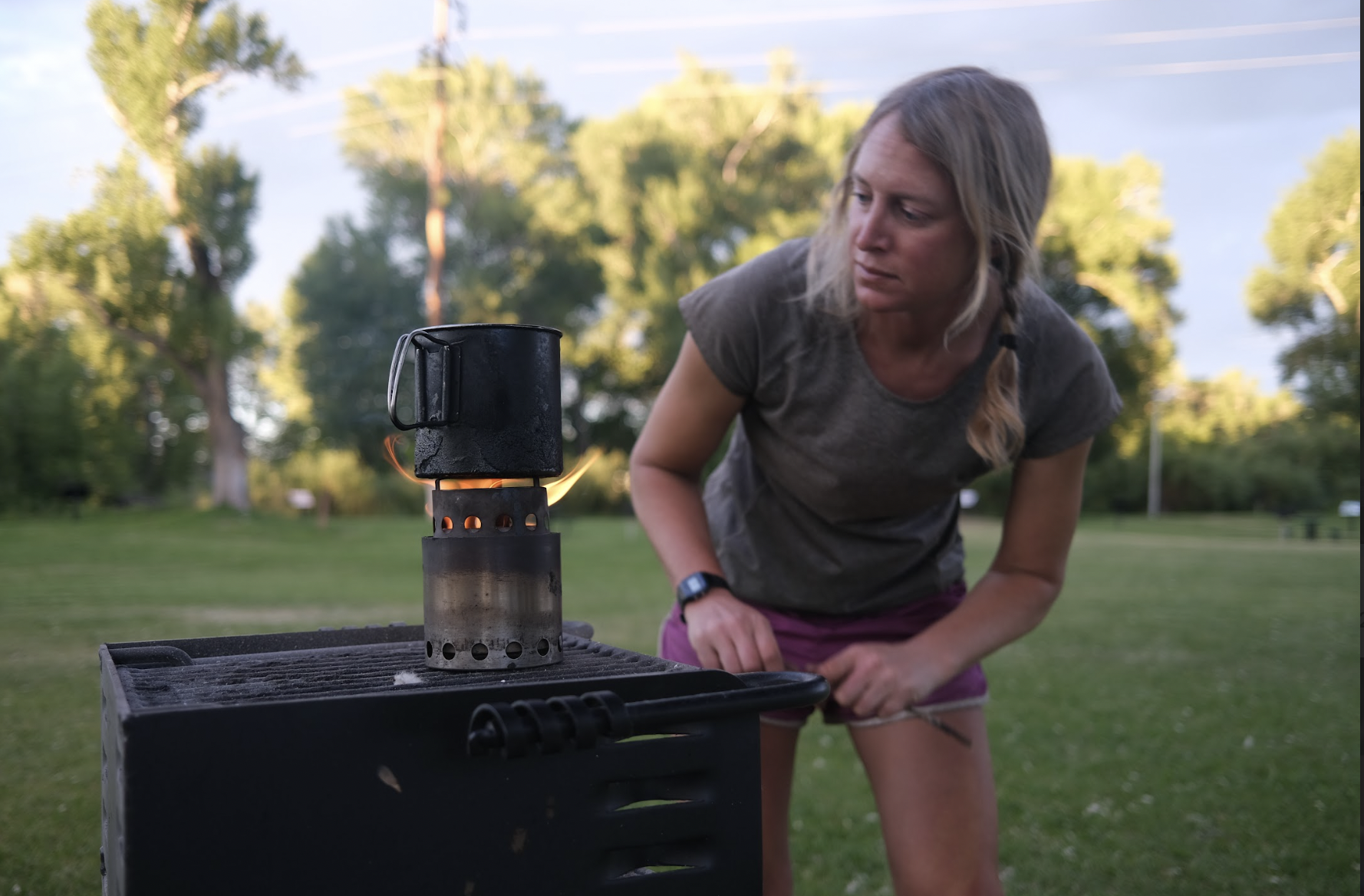
It takes time and attention to gather twigs, light a fire, and kindle flames. Your enjoyment of a twig stove will largely depend on how much you enjoy the time you spend making and tending the fire. I especially appreciate my stove in cold weather when it doubles as a tiny bonfire. I love sitting next to the stove and warming my hands over the flames.
For me, adventure cycling is all about spending time in nature. I see this time as an investment in my relationship with nature. I get to form a deeper, richer connection with the whole wild world.

